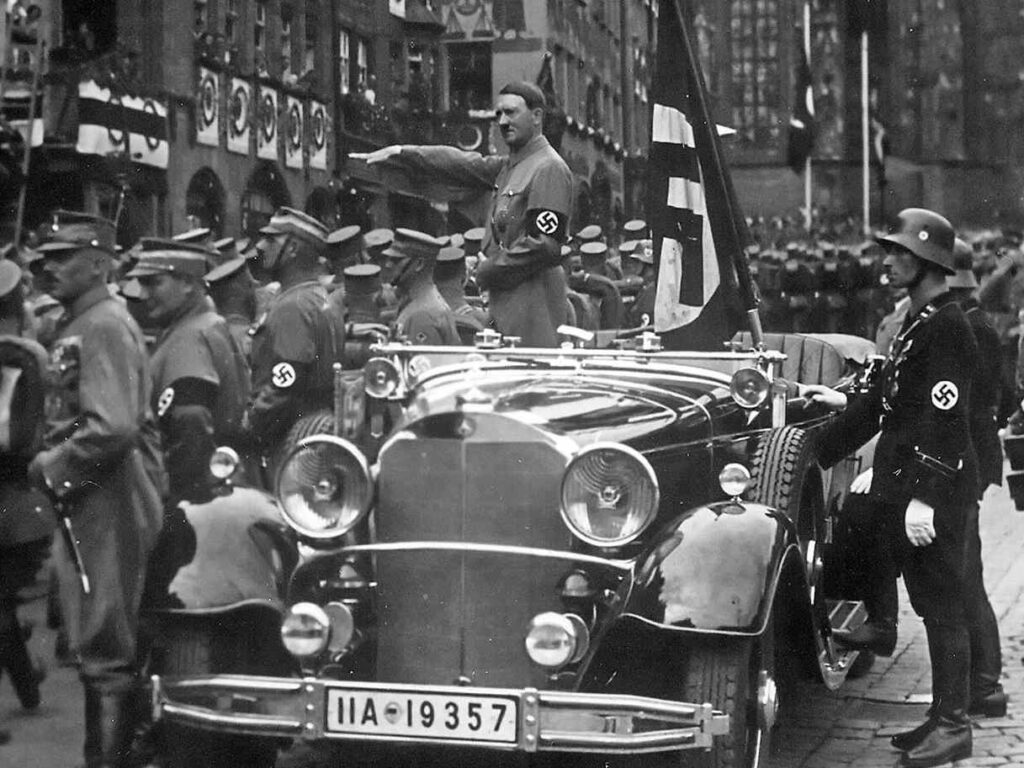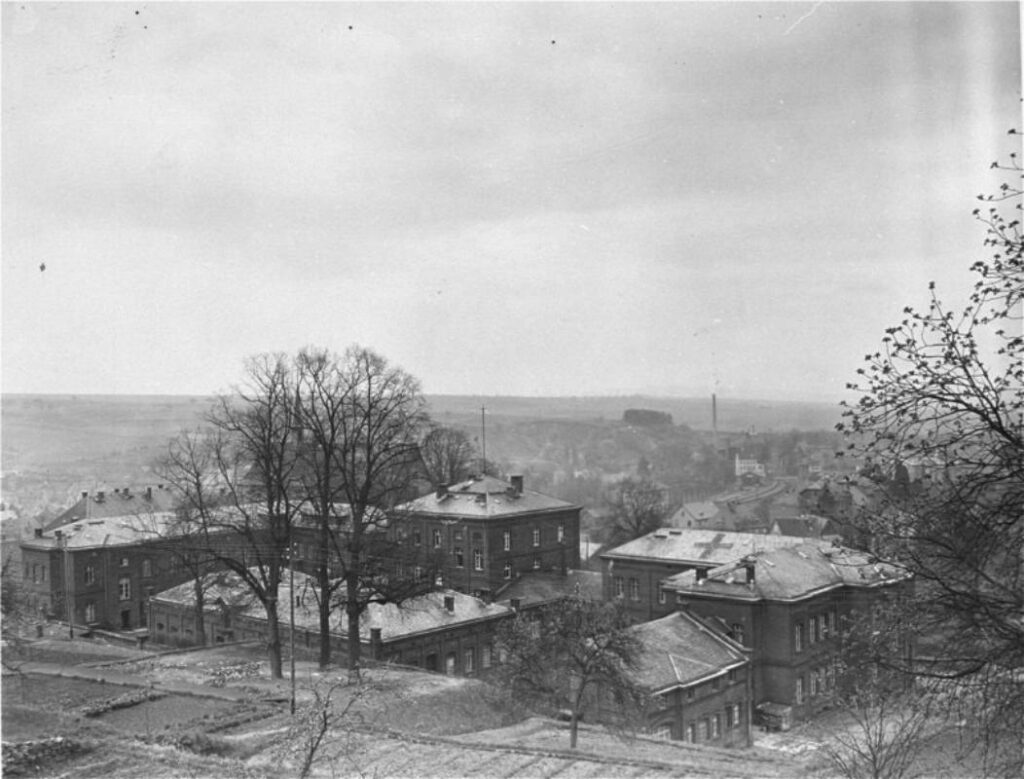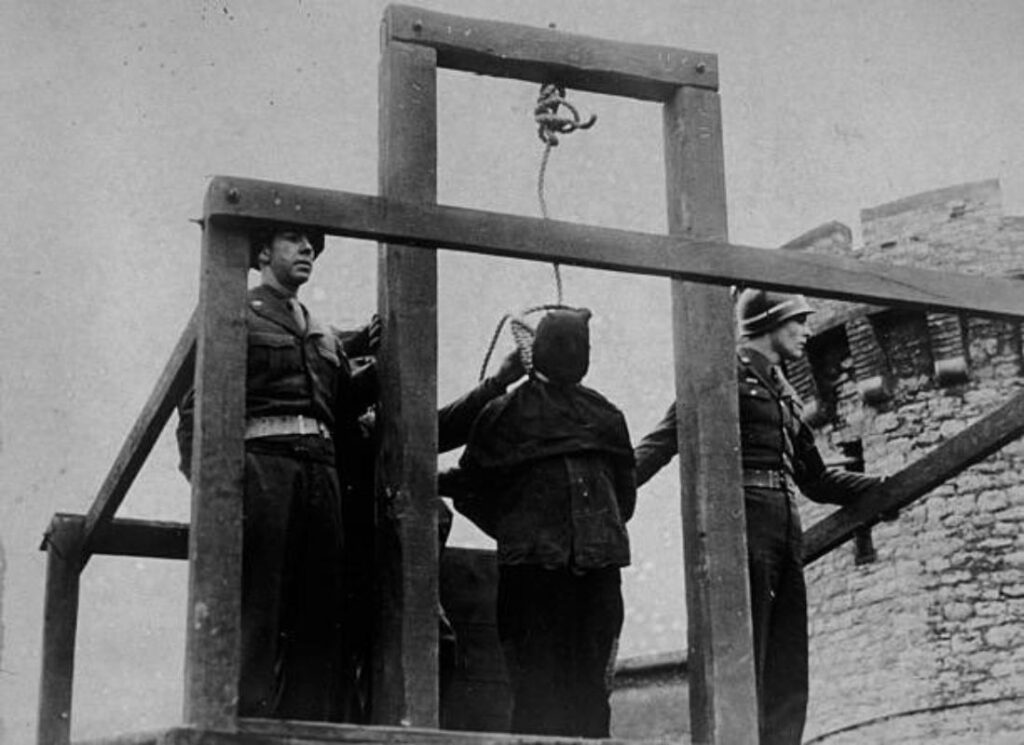Before the Holocaust even began, Adolf Hitler was officially yet secretly killing thousands of Germans. Yes, his own people.
We know that the bloodthirsty German dictator was executing political enemies and perceived threats. But this was different, darker, and more horrific.
Under the very noses of the German people, Hitler ran a program that erased more than 15,000 “useless” or “unwanted” citizens from the face of the earth.
Within a few years, he experimented with different killing methods. He used new and unconventional means to wipe out some of the nation’s most vulnerable people without remorse.
But what stood out the most was the sites he chose for these immoral massacres. Even more striking were the people he employed to do it.
This is the story of the T4 Program. The killing experiment that launched Hitler as a mass murderer and prepared the ground for the Holocaust.
Unlike the foreign Holocaust extermination sites of the Auschwitzes and the Treblinkas, these killings happened in the least suspicious facilities—psychiatric hospitals.
On the surface, these facilities seemed like the safest places for the mentally challenged. But under the Führer, they became slaughterhouses.
Doctors and nurses did the killings. Men and women who were trusted to preserve life turned around to become the greatest threat to their patients’ lives.

This is the story of the T4 Program. The killing experiment that launched Hitler as a mass murderer and prepared the ground for the Holocaust. It is the story of how the safest place for the weak became the launching pad for genocide.
A Hospital With a Dark Future
No one would have thought that a harmless-looking medical facility buried in one of Germany’s economic hubs would be a murder theatre. Hamadar Psychiatric Hospital was a haven for people with all sorts of mental challenges.
Sitting in the state of Hesse, it was founded in the 19th century and tended to Germany’s most vulnerable populations. But things changed in the 1940s when the Nazi government chose it for a dangerous plan. It was a plan for eliminating the weak. It was tagged “racial hygiene.”
Adolf Hitler’s cabinet believed that some lives were not worth living. That some people had overstayed their welcome on the earth. These were the mentally challenged. They saw people with mental illness, epilepsy, physical disabilities, or other chronic conditions as “useless eaters.”
What this means is that they served no use to humanity. More specifically, they were liabilities. Unnecessary burdens. Drainers of state resources.
Just a few weeks into World War II, Hitler okayed a secret document that gave some persons the constitutional right to exterminate the mentally challenged.
First, the government must disseminate this thinking nationwide. They printed posters that showed the amount of money spent on caring for these people. The argument appealed to many. Especially taxpayers. But no one knew the motive for the unsolicited education.
It wasn’t until August 1939 that the government set their dark plans in motion. Just a few weeks into World War II, Hitler okayed a secret document that gave some persons the constitutional right to exterminate the mentally challenged.

These agents of death were led by his personal doctor, Karl Brandt. Also included in the leadership of the mission was the head of his private chancellery, Phillip Bouhler.
With the government’s backing, they set out to implement the T4 Program. Arguably, the most dangerous medical betrayal in human history. Aside from Hadamar, five other Nazi hospitals were chosen for the unholy program.
How the Killing Worked
The program was designed to run under the cover of medical treatment. But in reality, it was a bureaucratic murder scheme.
There were three critical stages involved.
Step 1: Selection
One by one, every psychiatric patient in Nazi hospitals was rounded up. Care homes and orphanages, too. Doctors selected by the government interviewed the patients and wards. After the assessment, the doctors graded each patient as either “curable” or “incurable.”
However, beneath this defined system of selection lay other, more unusual considerations. For example, many patients got into the “incurable” list not because of hopeless health conditions. They were selected based on their age, productivity level, and even racial background.
Those who were appointed for death were sent to Hadamar. The program’s administrators transported them in sealed grey buses whose windows were painted to hide the occupants.
The patients were locked, and carbon monoxide was released to suffocate them.
Step 2: Deception
One of the significant strengths of secrecy is deception. The Nazi government was a master of it.
They informed families of the soon-to-be murdered people that their loved ones were transported to better facilities. In these new locations, they will enjoy specialized care, they lied.
Not long after, families received their obituary. The cause of death was usually pinned on common illnesses like pneumonia. These notices also came with death certificates.
Step 3: Killing
The 3rd step was brutal. Hitler tried several killing techniques on the patients.
The Hadamar Euthanasia Center, as it is also called, housed a slaughter room in the basement. There, the patients were locked, and carbon monoxide was released to suffocate them.
In just a few minutes, the poisonous gas suffocated tens of people. Among the dead were fathers, mothers, and even children. The painful part of the killing program was that it was supervised by medical personnel: Doctors and nurses.
They prepared the patients for the executions. This included shaving their hair, pulling out their golden tooth, and undressing them. They also disposed of their bodies afterward.
They noticed the covered buses, smelled the unmistakable odor of burned bodies, and noticed the habit of sending coffins to families.
As hard as they tried, the government couldn’t keep this program secret for very long. After a while, residents around the killing sites began to notice some odd signs.
First, it was the large amount of smoke from the facility’s chimneys that caught attention. Soon, locals began to suspect questionable activity.
The Nazi euthanasia program officials sent the corpses into crematory ovens. From January to August 1941, around 10,000 people were erased from the Earth’s surface at the Hadamar Euthanasia Center.
Community Reactions
Rumors of the strange activity at the site soon began to spread. Locals began to focus more attention on the facility.
They noticed the covered buses, smelled the unmistakable odor of burned bodies, and noticed the habit of sending coffins to families. Most of the time, the causes of death were similar.

Backlash and opposition began to rise. Notable figures in society began to call out the suspicious activity of the government. Clemens August Graf von Galen was one of them. The then Catholic Bishop of Limburg criticized the killings in an August 1941 sermon.
He denounced the “murder” and called on the Nazi government to end it. This, in addition to rising anger among the people, prompted Hitler to take some steps back in the program.
By the end of 1941, the Führer ordered the Nazi medical experiments to be slowed down. But the killings continued.
A Shift to “Silent” Killing
Rather than end the program, Hitler got even more creative. He switched to quieter killing. The T4 program began to use starvation and lethal injection to terminate lives.
An additional 5,000 people or thereabouts lost their lives to these more discreet methods. These extra deaths occurred between 1942 and 1945.
The Nazi medical experiments only ended after the Allied troops marched into Central Germany in March 1945.
During the program, the Nazi government expanded the scope of victims. Aside from Germans living with disabilities, there were prisoners of war from Poland and the Soviet Union.
The scope also covered forced laborers who had suffered injuries or sickness and were no longer useful for work.
Liberation and Justice
The Nazi medical experiments weren’t an isolated event. It was one of the Holocaust precursors—a test for what was to come. Hitler would later use the gas chambers to kill millions of people in extermination camps in Poland. But first, he used his people as specimens.
The Nazi medical experiments only ended after the Allied troops marched into Central Germany in March 1945. They uncovered the shocking program, which deserves a prominent place in the history of genocides.
The foreign troops found mass graves, cremation ovens, and documents where records of the killings were made.
Although many of the perpetrators escaped justice, a significant number were tried in October 1946 by the U.S. military courts. They were found wanting and executed. German courts also conducted another round of trials. There, more people were convicted.
Lessons from Hamadar
Before the Holocaust came on the scene, Hitler had been implementing his dark desires. He had been experimenting with his plans and had even recruited medical professionals to help actualize them.
A silent genocide in Nazi Germany was taking place behind hospital walls. Caregivers became killers. It is one of the most horrific episodes in German history.

The nation continues to remember the horrific Hadamar massacre to date. The Hamadar hospital is still standing as one of the oldest surviving mental health facilities in the country.
German authorities have taken extra steps to preserve the history of the 1940s. Parts of the hospital now serve as a memorial and a museum.
Visitors come in to see the basement that used to be a gas chamber. The cremation ovens are still there, plus the names of the victims.
The memorial is a solemn reminder of the shocking extent of human depravity. It also shows what can happen when we begin to discriminate, when we don’t see everyone as equals. The effects could be devastating.
The road to the Holocaust didn’t begin with illiteracy and brute force. It started with the collaboration of the intellectuals and professionals.
What lessons can we learn from this story about the power of dehumanization?


